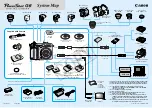
Pike
Technical
Manual
V5.2.3
158
Description of the data path
Description
of
the
data
path
This
enhances
both
the
dynamic
range
as
well
as
the
signal-to-noise
ratio.
Consequently
adding
256
8-bit
images
will
lead
to
a
potential
signal-to-noise
enhancement
of
24
dB
or
a
resulting
bit
depth
of
16
bit.
Frame memory and deferred image transport
An
image
is
normally
captured
and
transported
in
consecutive
steps.
The
image
is
taken,
read
out
from
the
sensor,
digitized
and
sent
over
the
IEEE1394
bus.
Deferred image transport
As
all
Pike
cameras
are
equipped
with
built-in
image
memory,
this
order
of
events
can
be
paused
or
delayed
by
using
the
deferred image transport
feature.
Pike
cameras
are
equipped
with
64
MB
of
RAM
(Pike
F-1100,
F-1600:
256
MB).
The
table
below
shows
how
many
frames
can
be
stored
by
each
model.
The
memory
operates
according
to
the
FIFO
(first
in,
first
out)
principle.
This
makes
addressing
for
individual
images
unnecessary.
Note
•
The
camera
must
be
idle
to
toggle
this
feature
on/off.
Idle
means:
no
image
acquisition,
no
trigger.
•
Set
grab
count
and
activation
of
HighSNR
in
one single
write access
.
Note
•
The
averaged
image
is
output
at
a
lower
frame
rate
roughly
equivalent
to
fps_old/N,
where
N
is
the
number
of
images
averaged.
In
fact,
due
to
camera
internal
conditions,
and
according
to
which
format
and
mode
settings
are
in
use,
it
can
vary
slightly
to
be
closer
sometimes
to
1/
((N/fps_old)
+
T_shutter).
It's
impractical
to
express
in
a
formula
or
tables,
across
all
camera
models
and
modes.
But
these
notes
should
be
sufficient
to
help
each
user
determine
that
the
camera
behaves
as
described.
•
The
potential
SNR
enhancement
may
be
lower
when
using
more
than
8-bit
original
bit
depth.
•
Select
16-bit
image
format
in
order
to
take
advantage
of
the
full
potential
SNR
and
DNR
(
D
y
N
amic
R
ange)
enhancements.
•
For
8-bit
video
modes,
the
internal
HSNR
calculations
are
done
with
14-bit.
















































